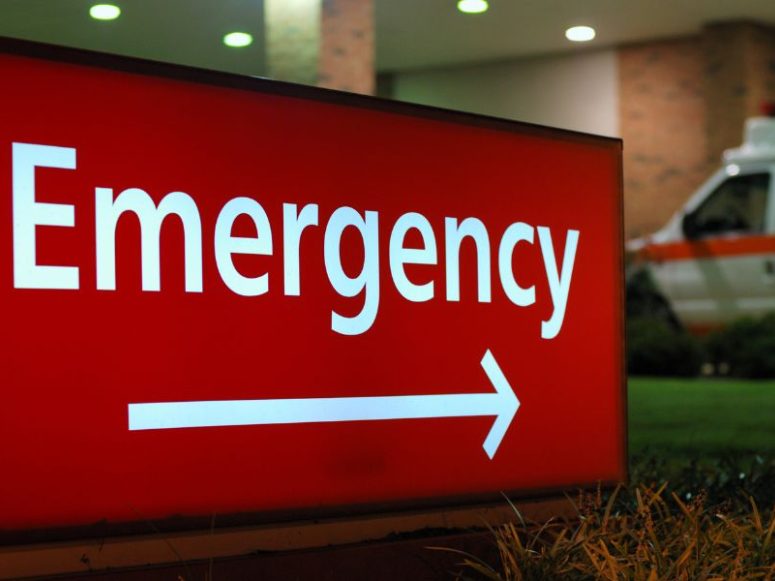Key Points
- Life-threatening conditions require immediate emergency room care, while urgent care handles non-emergency issues that need prompt attention within 24 hours.
- Cost differences are significant - emergency room visits average $1,700 compared to $165 for urgent care, representing potential savings of 90% for appropriate conditions.
- Wait times vary dramatically - urgent care typically sees patients within 15-30 minutes, while emergency rooms can have 2-4 hour waits for non-critical cases.
Choosing between urgent care and the emergency room can be a critical decision that affects both your health outcomes and medical costs. Understanding the differences between these two healthcare options helps ensure you receive appropriate care while avoiding unnecessary expenses and delays.
The distinction between urgent care and emergency room services has become increasingly important as healthcare costs continue to rise and patients seek more efficient ways to access medical care. Making the right choice depends on understanding the severity of your condition, the capabilities of each facility, and the urgency of your medical needs.
Understanding Emergency Room Services
When Emergency Care is Essential
Emergency rooms are designed to handle life-threatening conditions that require immediate medical intervention. These facilities operate 24/7 with specialized equipment, trauma teams, and the ability to perform emergency surgery when needed.
Life-Threatening Conditions Requiring ER Care:
- Chest pain or suspected heart attack
- Difficulty breathing or severe shortness of breath
- Stroke symptoms (sudden weakness, confusion, speech problems)
- Severe injuries from accidents or trauma
- Loss of consciousness or severe head injuries
- Uncontrolled bleeding
- Severe burns
- Poisoning or drug overdose
- Severe allergic reactions
Emergency Room Capabilities
Emergency departments maintain advanced medical equipment including CT scanners, MRI machines, cardiac catheterization labs, and operating rooms. They're staffed with emergency medicine physicians, trauma surgeons, and specialists available for immediate consultation.
The emergency room uses a triage system that prioritizes patients based on the severity of their condition. This means patients with life-threatening conditions receive immediate attention, while those with less serious issues may experience longer wait times.
Understanding Urgent Care Services
When Urgent Care is Appropriate
Urgent care centers bridge the gap between primary care and emergency medicine, providing prompt treatment for conditions that need attention but aren't life-threatening. These facilities typically operate with extended hours and accept walk-in patients.
Conditions Suitable for Urgent Care:
- Minor injuries like sprains, strains, and small cuts
- Fever without severe symptoms
- Ear infections and sore throats
- Urinary tract infections
- Minor burns and wounds requiring stitches
- Flu symptoms and respiratory infections
- Allergic reactions (non-severe)
- Minor fractures and suspected broken bones
Urgent Care Capabilities
Most urgent care centers offer X-ray services, laboratory testing, basic wound care, and treatment for common illnesses and minor injuries. They're staffed with physicians, nurse practitioners, and physician assistants trained in urgent care medicine.
Urgent care centers typically operate on a first-come, first-served basis, though some offer online check-in systems to reduce wait times. They provide efficient care for straightforward medical issues that don't require emergency department resources.
Cost Comparison and Financial Considerations
Emergency Room Costs
Emergency room visits are significantly more expensive due to the advanced equipment, specialized staff, and 24/7 availability. Average costs range from $1,200 to $3,000 for typical visits, with complex cases potentially costing much more.
Even with insurance, emergency room copays are typically higher than urgent care, often ranging from $100 to $500 depending on your insurance plan. For uninsured patients, emergency room bills can create substantial financial burden.
Urgent Care Affordability
Urgent care visits typically cost between $100 and $300, making them significantly more affordable for appropriate conditions. Most insurance plans cover urgent care with lower copays, usually ranging from $30 to $75.
The cost savings of choosing urgent care over the emergency room for appropriate conditions can be substantial, often representing 80-90% savings while still receiving quality medical care.
Wait Times and Efficiency
Emergency Room Wait Times
Emergency rooms prioritize patients based on medical urgency, which means non-critical cases often experience longer wait times. Average wait times for non-emergency conditions can range from 2 to 6 hours, depending on the facility and time of day.
Peak times for emergency rooms typically include evenings, weekends, and holidays when other healthcare options may be limited. During these times, wait times for non-urgent conditions can be particularly long.
Urgent Care Efficiency
Urgent care centers typically see patients much more quickly, with average wait times of 15 to 45 minutes. Their streamlined approach to common conditions allows for efficient treatment and shorter overall visit times.
Many urgent care centers offer online check-in systems, real-time wait time updates, and appointment scheduling to further reduce wait times and improve patient convenience.
Making the Right Decision
Red Flags Requiring Emergency Care
Certain symptoms always warrant emergency room evaluation, regardless of other factors. These include severe chest pain, difficulty breathing, signs of stroke, severe trauma, uncontrolled bleeding, and loss of consciousness.
When in doubt about the severity of symptoms, it's better to err on the side of caution and seek emergency care. Emergency rooms are equipped to handle any medical situation, while urgent care has limitations.
Ideal Urgent Care Scenarios
Choose urgent care for conditions that need prompt attention but aren't life-threatening. This includes minor injuries, common illnesses, and situations where you need medical care outside your primary care physician's office hours.
Urgent care is particularly valuable for working adults who need efficient medical care without the time commitment and expense of emergency room visits for minor conditions.
Decision-Making Framework
Ask yourself these key questions:
- Is this condition life-threatening or potentially life-threatening?
- Can this wait until my primary care physician is available?
- Do I need immediate specialized care or advanced diagnostic testing?
- Am I experiencing severe pain or symptoms that are rapidly worsening?
If you answer yes to questions 1, 3, or 4, consider emergency care. If you answer yes to question 2, schedule a primary care appointment. Otherwise, urgent care is likely appropriate.
Insurance and Coverage Considerations
Understanding Your Benefits
Review your insurance plan to understand coverage differences between emergency room and urgent care visits. Most plans encourage urgent care use through lower copays and better coverage for non-emergency conditions.
Some insurance plans require pre-authorization for emergency room visits that are later determined to be non-emergent, potentially leaving you responsible for higher costs.
Network Considerations
Ensure the urgent care center you choose is in your insurance network to maximize coverage and minimize out-of-pocket costs. Emergency rooms are typically required to treat patients regardless of insurance status, but costs may vary significantly.
Conclusion
Understanding when to choose urgent care versus the emergency room is crucial for receiving appropriate medical care while managing healthcare costs effectively. Emergency rooms excel at treating life-threatening conditions with advanced equipment and specialized staff, while urgent care provides efficient, cost-effective treatment for non-emergency medical issues.
The key to making the right decision lies in honestly assessing the severity and urgency of your condition. When facing a medical situation, consider the symptoms, timing, and available resources to choose the most appropriate level of care. This approach ensures you receive proper treatment while avoiding unnecessary costs and delays in the healthcare system.
References:
[1] Scripps Health. "Should You Go to the Emergency Room or Urgent Care?" https://www.scripps.org/news_items/4231-should-you-go-to-the-emergency-room-or-urgent-care
[2] University of Chicago Medicine. "Urgent care vs emergency room: What's the difference?" https://www.uchicagomedicine.org/forefront/health-and-wellness-articles/when-to-go-to-the-emergency-room-vs-an-urgent-care-clinic
[3] Cleveland Clinic. "Emergency Room, Urgent Care, or Express Care: Which do you need?" https://my.clevelandclinic.org/health/articles/15940-emergency-room-urgent-care-or-express-care-which-do-you-need








